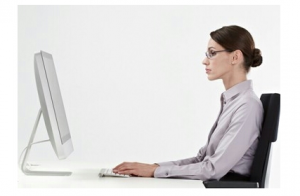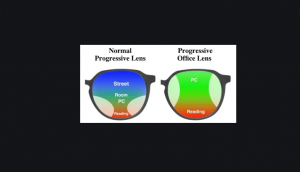Neck Pain During COVID-19? In Many Cases, Your Eyes are to Blame
A surge in neck pain for the 50 year-old plus crowd due to COVID-19-related increase in computer use and video conferencing has an eye care related explanation.
BETHESDA, MARYLAND, UNITED STATES, April 1, 2021 /EINPresswire.com/ -- By Dr. Michael Berenhaus, ODMBAWe are seeing a large influx of patients coming to our clinic with the chief complaint of neck pain when asked about their general well-being. Many are pursuing physical therapy, chiropractic care, and orthopedic consultations.
After all other medical reasons for neck pain are ruled out, it is time to speak with the eye doctor! Evidence is suggesting that the neck pain is often due to tilting the head back during computer usage while individuals are searching to hit the “sweet spot” of clarity in their multi-focal eyeglasses.
Those 50 and over almost uniformly have a reduction in accommodative amplitude— the ability to see up close. For some, it hits earlier than 50 and some, later. Multi-focal eyeglasses are prescribed for this, enabling patients to see both far and near at the same time. Most patients avoid half-glasses for cosmetic reasons and due to a lack of focusing range. They also avoid large single-vision reading glasses which limit the depth of field as well as additionally causing blurred distance vision. Most patients have migrated to the multi-focal option, also known as “progressives”, which are designed to enable patients to see at all distances from very far away to up close reading, including everything in between. The top part of the lenses are designed for far distance, the middle for intermediate/computer distance, and the bottom for near tasks. The change from far distance in the top to near in the bottom of the lenses is gradual with progression thus the name “progressives.” They are excellent functionally— but not perfect. We will address this later.
New developments in the technology of computer monitors have yielded larger size screens while industry leaders in the community are recommending larger and larger screens to users for optimal viewing. CNET recommends 27” screens and says, “bigger is almost always better” and adds, “Within the constraints of your budget and desk space, get the largest monitor you can. You'll rarely regret buying a monitor that's too big, but you'll frequently regret buying one that's too small.”
The “best picks” for monitors from PCMag also average 27” in size.
The issue with larger screens, despite the benefit of added area for information, is that the large size is mostly visible through the top part of progressives, the “distance zone”. This lens field is not the optimal area for viewing an intermediate target. So, in order to clear up the image, many end up tilting their heads back and lifting their chin to find the “intermediary/computer zone” in their progressive eyeglasses. And this unnatural position is assumed for hours at a time. With the increased time spent on computers due to a work-at-home shift during Covid, and a Harvard Business School Working Knowledge study suggesting, “at least 16 percent of employees will remain at home workers long after COVID-19 recedes”, this computer usage and video-conferencing is and may well remain the prima facia cause of a large increase in neck pain.
Moreover, by expending added energy by using the neck muscles unnaturally and over a prolonged period, a secondary problem aside from neck pain occurs– a reduction of comprehension and subsequent productivity. After all, we only have so much energy that we can use.
The solution exists and it is not a difficult one. We are recommending computer progressives in our clinic for this unique situation. Most of our patients at Bethesda Vision Care call their computer progressives their favorite and most valuable pair of eyeglasses in their collection. Computer progressives have computer vision in the top, allowing for a larger depth of focus (which translates to clear vision when leaning in and out - single vision eyeglasses rarely provide this) and reading vision in the bottom. The zones of clarity are so optimal that two large screens side by side are easily visible. And no more neck tilt!
Explore this option with your eye doctor and get rid of that incessant neck pain being more productive in the process.
#Dr Michael Berenhaus is the Founder of Bethesda Vision Care, located in Bethesda, Maryland and an optometric practice in partnership with Keplr Vision. Dr. Berenhaus is a Past-President of the Maryland Optometric Association and is currently serving as a Regional Optometric Lead for Keplr Vision.#
Michael Berenhaus
Bethesda Vision Care
+1 301-520-2120
email us here
Visit us on social media:
Facebook
LinkedIn
Legal Disclaimer:
EIN Presswire provides this news content "as is" without warranty of any kind. We do not accept any responsibility or liability for the accuracy, content, images, videos, licenses, completeness, legality, or reliability of the information contained in this article. If you have any complaints or copyright issues related to this article, kindly contact the author above.



